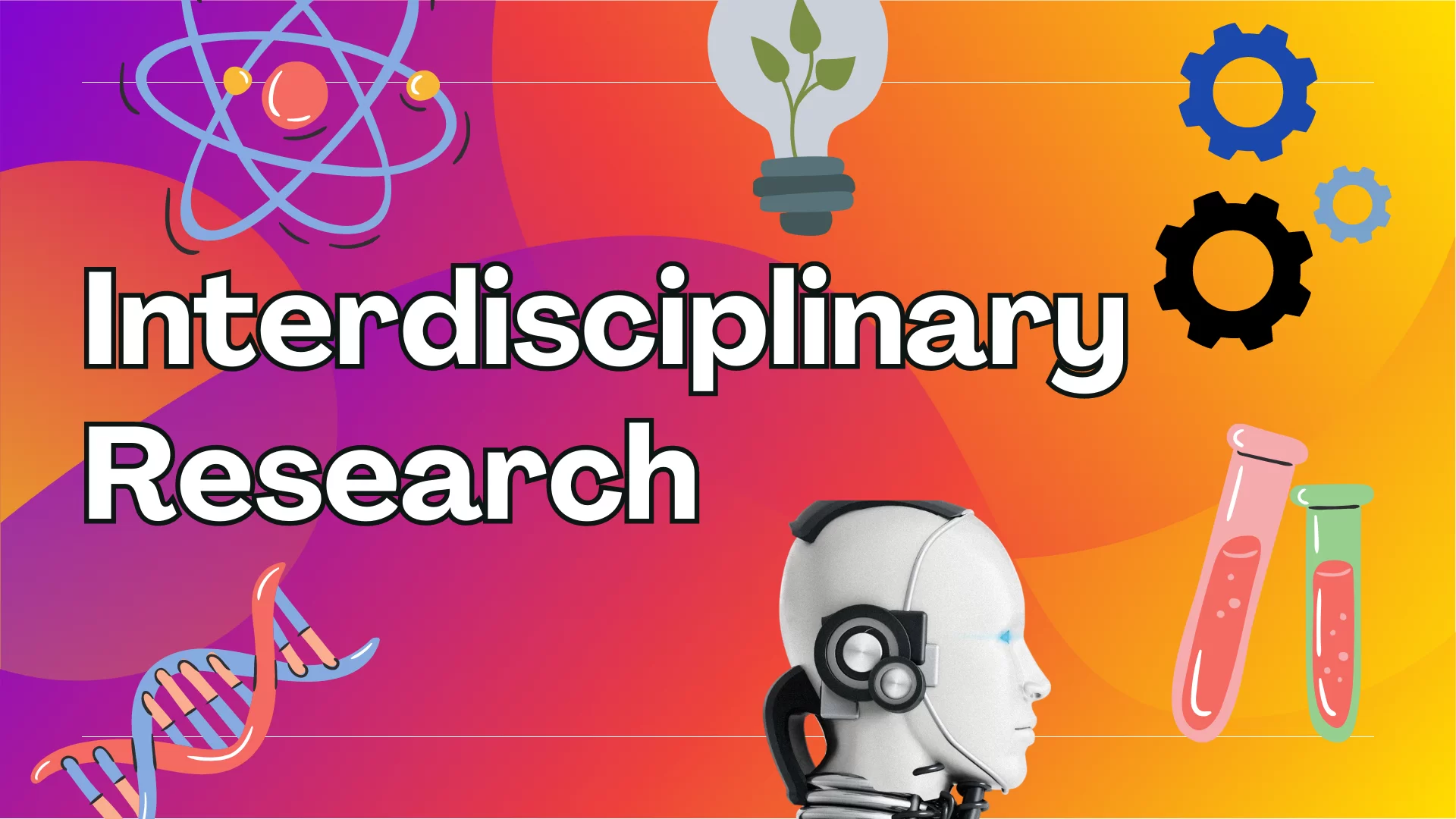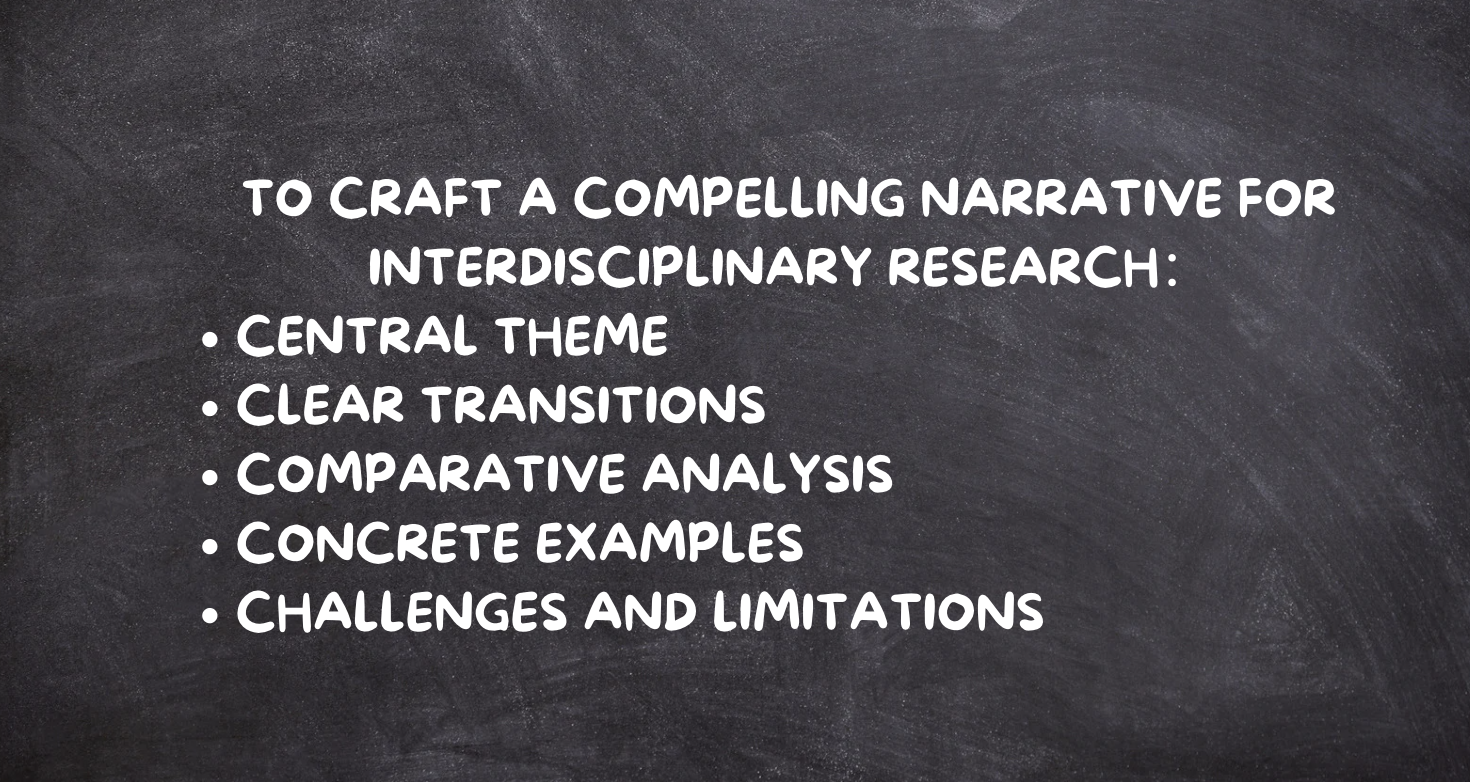
Understanding Interdisciplinary Research Challenges
Defining Interdisciplinary Research
Interdisciplinary research integrates knowledge, methods, and perspectives from multiple academic disciplines to address complex problems or explore innovative ideas. This collaborative approach has become increasingly important in our interconnected world, where many of today's most pressing challenges require insights from various fields of study. Interdisciplinary research breaks down traditional academic silos, fostering creativity and generating novel solutions that might be overlooked within the confines of a single discipline.
The importance of interdisciplinary research in modern academic and scientific landscapes cannot be overstated. It allows for a more holistic understanding of complex issues, from climate change to artificial intelligence ethics. By combining diverse expertise, researchers can tackle problems from multiple angles, leading to more comprehensive and impactful outcomes. Moreover, interdisciplinary work often drives innovation, as the intersection of different fields can spark new ideas and methodologies that push the boundaries of knowledge.

Common Obstacles in Interdisciplinary Publishing
While interdisciplinary research offers numerous benefits, it also presents unique challenges when it comes to publication:
Navigating diverse methodologies and terminology across different fields
Communicating complex ideas accessibly to experts from various disciplines
Finding suitable journals and reviewers for interdisciplinary work
Overcoming potential misunderstandings or unfair critiques from reviewers unfamiliar with all involved disciplines
Researchers must be strategic in their choice of publication venues and clearly articulate the interdisciplinary value of their work to both editors and reviewers.
Preparing Your Interdisciplinary Manuscript
Structuring Your Research Paper
When structuring an interdisciplinary research paper, create a coherent narrative that seamlessly integrates multiple disciplines. Start with a broad introduction outlining the interdisciplinary nature of the research and its significance. Provide a comprehensive literature review covering relevant work from all involved disciplines, highlighting the gaps your interdisciplinary approach aims to address.
In the methodology section, clearly explain how different disciplinary approaches are combined or integrated. When presenting results, strive for clarity and accessibility, keeping in mind that your audience may include experts from various fields. Use visual aids to illustrate complex interdisciplinary concepts or relationships between different aspects of your research.
Crafting a Compelling Interdisciplinary Narrative
To craft a compelling narrative for interdisciplinary research:
Identify a central theme or question that ties together the different disciplinary elements
Use clear transitions between sections to highlight how insights from one discipline inform or complement another
Consider using comparative analysis to show how your integrated method leads to unique conclusions
Use concrete examples or case studies to illustrate unique insights
Discuss challenges and limitations of your interdisciplinary approach for transparency and credibility
Leveraging AI Tools for Interdisciplinary Research
Enhancing Literature Review with Ponder
Ponder's AI-powered knowledge maps revolutionize interdisciplinary literature reviews by automatically converting complex academic papers into structured, visual representations. This visual approach to information processing makes it easier to spot connections and patterns across multiple disciplines.
Ponder's multi-document comparison capability allows researchers to efficiently analyze and compare papers from different disciplines side by side, highlighting similarities, differences, and potential areas of integration. This streamlined process saves valuable time and enhances the depth of interdisciplinary analysis, facilitating a more comprehensive understanding of the interdisciplinary landscape.
Optimizing Writing Process with AI Assistance
Ponder's integrated workflow combines search, reading, note-taking, and questioning functionalities in one platform, streamlining the process of gathering and synthesizing information from multiple disciplines. The AI-assisted mind mapping feature helps researchers visualize relationships between different ideas, methodologies, and findings from various disciplines on a digital canvas. This spatial representation of knowledge makes it easier to identify novel connections and develop innovative interdisciplinary frameworks.
Choosing the Right Publication Venue
Identifying Interdisciplinary-Friendly Journals
Selecting the right journal for your interdisciplinary research is crucial for successful publication. When evaluating potential journals, consider the following criteria:
Scope and mission statement
Editorial board composition
Past publications
Impact factor and readership
Here's a table of top interdisciplinary publications across various fields:
Journal Name | Focus Areas | Impact Factor |
|---|---|---|
Nature | Science and Technology | 49.962 |
PLOS ONE | All Scientific Disciplines | 3.240 |
Frontiers in Psychology | Psychology and Neuroscience | 2.990 |
Global Environmental Change | Environmental Sciences | 10.466 |
Exploring Alternative Publication Options
In addition to traditional journals, consider alternative publication options that may offer greater flexibility and reach. open access platforms have become increasingly popular for interdisciplinary work, as they often have a broader scope and can attract readers from diverse fields. These platforms typically have faster publication times and allow for more innovative formats.
When considering open access options, evaluate factors such as the platform's reputation, peer review process, and indexing in major databases. Some reputable open access platforms for interdisciplinary research include PLOS ONE, Scientific Reports, and Frontiers journals. Additionally, preprint servers like arXiv or bioRxiv can be valuable for sharing your work early and receiving feedback from a wide audience before formal publication.
Navigating the Peer Review Process
Addressing Diverse Reviewer Perspectives
Navigating the peer review process for interdisciplinary research requires a strategic approach to address diverse reviewer perspectives. Start by clearly articulating the interdisciplinary nature of your work in your cover letter and introduction. When explaining complex interdisciplinary concepts, use analogies or real-world examples that reviewers from different backgrounds can relate to. Consider including a glossary of key terms from each discipline to ensure clarity across diverse readership.
To handle conflicting feedback from reviewers of different disciplines, approach each comment with an open mind and look for opportunities to strengthen your paper's interdisciplinary framework. If reviewers from one discipline suggest changes that might compromise the work's relevance to another field, explain in your response how you've balanced these competing needs. Don't hesitate to respectfully disagree with a reviewer if their suggestion would undermine the interdisciplinary integrity of your work, but always provide a clear, evidence-based rationale for your position.

Revising and Resubmitting Interdisciplinary Work
When revising interdisciplinary work based on reviewer feedback, maintain the delicate balance between disciplines while addressing specific concerns. Start by categorizing the feedback according to the disciplines they relate to, which can help you identify any conflicting suggestions or areas where further integration is needed. Prioritize changes that enhance the overall interdisciplinary narrative of your paper, ensuring that revisions in one area don't inadvertently weaken the contribution to another field.
Ponder can be an invaluable tool in managing revisions and tracking changes for interdisciplinary work. Its AI-powered knowledge mapping feature allows you to visualize how proposed changes might affect the overall structure and balance of your paper across different disciplines. Use the platform's multi-document comparison functionality to ensure that your revisions maintain consistency across all sections of your manuscript. The integrated workflow of Ponder also makes it easier to incorporate new literature or data that might be necessary to address reviewer comments, ensuring that your revised manuscript remains up-to-date and comprehensive across all relevant disciplines.
By leveraging these strategies and tools, you can navigate the challenges of publishing interdisciplinary research more effectively, increasing your chances of success in this exciting and important area of academic endeavor.
